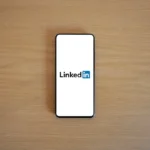Right, so I had a brilliant chat with Tilly the other day – she’s a whiz when it comes to LinkedIn and generating new business. We dived deep into this fascinating idea of ‘Hyper-Personalized Content Strategy Based on Buyer Personas’, and I’m itching to share what I learned. It’s all about creating content that really speaks to your target audience, rather than just throwing generic stuff at the wall and hoping something sticks.
Think of it like this: imagine you’re trying to sell hiking boots. You wouldn’t show the same advert to a seasoned mountaineer as you would to a casual weekend walker, would you? Same principle applies on LinkedIn. The key is truly understanding your different ‘buyer personas’ and crafting content that addresses their specific needs, desires and problems.
Defining Your Personas: The Foundation of Everything
Tilly stressed that this stage is absolutely crucial. You can’t create hyper-personalised content until you know who you’re personalising it for. We’re talking about deep dives into demographics, job titles, responsibilities, pain points, goals, preferred content formats, and even their level of LinkedIn activity. What keeps them up at night? What are their professional aspirations? What kind of information are they actively seeking on LinkedIn?
For example, if you’re targeting HR Managers (like the prompt suggests!), you might consider things like: Are they struggling with talent acquisition? Is employee retention a major concern? Are they looking for ways to improve company culture? Are they struggling to find candidates that fit the companies values? What solutions are they searching for?
Tilly mentioned using LinkedIn Sales Navigator to gather this kind of data. It allows you to filter professionals based on various criteria and analyse their activity. Look at the groups they belong to, the content they share, and the conversations they engage in. This will give you invaluable insights into their interests and challenges. Another option is to use a tool like HubSpot which will provide many ways of collecting and anlysing the data.
Crafting Content That Resonates (and Converts!)
Once you have your personas nailed down, the fun (and the work!) begins: creating the hyper-personalised content. This isn’t just about changing a few words here and there. It’s about crafting entire articles, videos, and even simple LinkedIn posts that speak directly to the unique needs of each persona.
Here’s where we can apply the HR Manager persona example again. Instead of just posting a generic ‘We’re Hiring!’ message, you could create:
- An article titled: ‘Five Proven Strategies to Boost Employee Retention in a Post-Pandemic World’. This would directly address a key concern for HR Managers right now. You could reference industry reports, case studies and examples.
- A video showcasing: ‘A Day in the Life at [Your Company]’. Showcasing company culture and employee satisfaction is very attractive to job seekers.
- A LinkedIn post highlighting: ‘How We Reduced Our Employee Turnover by 20% Through Implementing [Specific Initiative]’. This is a great opportunity to subtly show off what you have to offer.
Remember, it’s all about answering their key concerns. Think about what they are specifically worrying about each day and address it head on with useful and easily digestible content.
Engagement: It’s a Two-Way Street
Creating great content is only half the battle. You need to actively engage with HR professionals on LinkedIn. Join relevant groups, participate in discussions, and share your insights. Comment thoughtfully on their posts and show genuine interest in their work.
Don’t just spam them with your sales pitch. Build relationships first. Offer value, share helpful resources, and position yourself as a trusted advisor. Tilly was adamant about this: ‘LinkedIn is a social network, not just a broadcasting platform.’ It’s all about creating meaningful connections and building trust over time.
Tailoring Language, Examples and Call-to-Actions
This is where the hyper-personalization really shines. Use language that resonates with your persona. Instead of using generic jargon, use terms they actually use themselves. Reference industry publications they read, and provide examples that are relevant to their specific challenges.
And when it comes to call-to-actions, make them ultra-specific. Instead of a generic ‘Contact Us’, try something like: ‘Download our free guide on reducing employee turnover in the tech industry’ (if you’re targeting HR Managers in the tech sector, that is!).
So, to summarise, developing a successful hyper-personalised content strategy rests on understanding your buyer personas, creating content that answers their key concerns, engaging thoughtfully, and tailoring the content with industry specific language. By following these steps, you can transform your LinkedIn presence from a simple broadcasting platform to a powerful lead generation engine.











